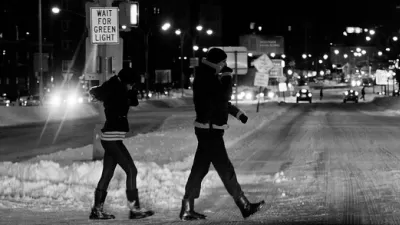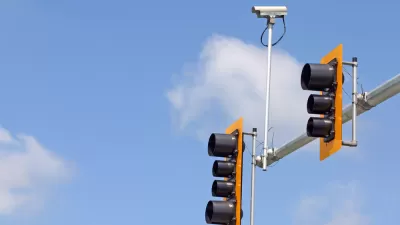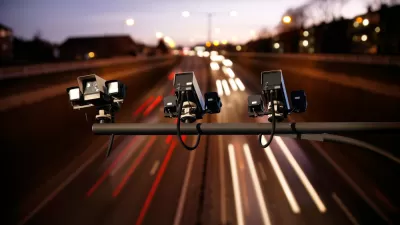File under: not a cash grab.

The New York Department of Transportation (DOT) has crunched the numbers and has the data to prove it: speed cameras reduce unsafe speeds.
Last year, the city of New York was finally allowed by the state to run speed cameras on specific corridors 24 hours a day and seven days a week. The around the clock camera enforcement is controversial with drivers and government watchdogs, but popular with traffic safety advocates.
Now there is evidence that the 24-7 speed cameras have produced safer conditions on the street by drastically reducing the average speeds of drivers.
“The shift to around-the-clock automated enforcement since Aug. 1, 2022 has led to significant reductions in speeding — including 96 percent on Manhattan's Houston Street, 74 percent on North Conduit Boulevard near JFK Airport, and 68 percent on the Bronx's treacherous Bruckner Boulevard,” reports David Meyers, sharing insight into date recent released by DOT.
The data would seem to provide strong evidence that speed cameras are more than just a cash grab—a charge leveled by many speed camera opponents.
New York’s speed cameras became the character of the day on social media recently when famous television show creator David Simon complained about the cameras busting him for speeding.
Meyers again reiterates the case for automated enforcement of speeding in the source article, linked below:
Speeding is deadly, and the chances of being killed by a driver increase with driver speed. Speed was a reported factor in nearly one-third of deadly crashes in the U.S. in 2021, according to the Federal Highway Administration.
The New York City DOT is far from the first agency to see evidence of the safety benefits of speed cameras, of course. Similar data was also published in Ottawa earlier this year.
FULL STORY: Success: Drivers are Slowing Down on Streets with 24/7 Speed Cameras

Maui's Vacation Rental Debate Turns Ugly
Verbal attacks, misinformation campaigns and fistfights plague a high-stakes debate to convert thousands of vacation rentals into long-term housing.

Planetizen Federal Action Tracker
A weekly monitor of how Trump’s orders and actions are impacting planners and planning in America.

Chicago’s Ghost Rails
Just beneath the surface of the modern city lie the remnants of its expansive early 20th-century streetcar system.

Bend, Oregon Zoning Reforms Prioritize Small-Scale Housing
The city altered its zoning code to allow multi-family housing and eliminated parking mandates citywide.

Amtrak Cutting Jobs, Funding to High-Speed Rail
The agency plans to cut 10 percent of its workforce and has confirmed it will not fund new high-speed rail projects.

LA Denies Basic Services to Unhoused Residents
The city has repeatedly failed to respond to requests for trash pickup at encampment sites, and eliminated a program that provided mobile showers and toilets.
Urban Design for Planners 1: Software Tools
This six-course series explores essential urban design concepts using open source software and equips planners with the tools they need to participate fully in the urban design process.
Planning for Universal Design
Learn the tools for implementing Universal Design in planning regulations.
planning NEXT
Appalachian Highlands Housing Partners
Mpact (founded as Rail~Volution)
City of Camden Redevelopment Agency
City of Astoria
City of Portland
City of Laramie





























